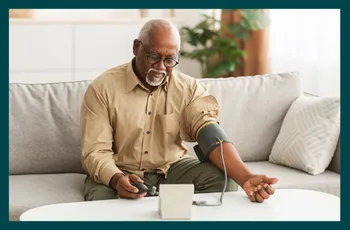Migraine after exercise? Causes and treatment
Written by Dr Nelson Lau, MBBS FRACGP, GP & Digital Health Specialist.

Contents

Summary: Exercise-induced migraines can be triggered by factors like dehydration, low blood sugar, intense activity, and environmental conditions. While high-intensity workouts may worsen migraines, preventive measures such as staying hydrated, eating a balanced meal, warming up properly, and managing stress can help reduce the risk. If migraines persist or worsen, consulting a doctor (including via telehealth) can provide tailored treatment options, including medication and lifestyle adjustments. With the right strategies, you can stay active while effectively managing exercise-triggered migraines.
If you’ve ever finished a physical workout only to be hit with a throbbing headache or a full-blown migraine, you’re not alone. Exercise-induced migraines are a frustrating and painful experience that can make even the most fitness-conscious person hesitant to work out. But why does it happen? And more importantly, how can you prevent it?
Let’s look into the causes of exercise-triggered migraines, how to manage them, and when to seek medical help.
Why do I get a migraine after exercise? Causes
Exercise should make you feel better, not worse—so why do some people experience migraines after physical activity? There are several possible reasons, including:- Changes in blood flow – Exercise causes blood vessels to dilate (or widen), which can trigger a migraine in sensitive individuals.
- Dehydration – Not drinking enough water before, during, or after exercise can lead to headaches and migraines.
- Low blood sugar – If you work out on an empty stomach, low glucose levels can contribute to migraines.
- High-intensity activity – Sudden, strenuous exercise can create a spike in blood pressure, which may trigger a headache or migraine.
- Environmental factors – Heat, humidity, bright lights, or strong odours (like from a gym or outdoor air pollution) can contribute to migraine attacks.
Also read: Migraine vs headache: how do I know if my headache is a migraine?
How exercise triggers migraine?
For people prone to migraines, exercise can act as a trigger by stimulating changes in blood pressure, circulation, and hormone levels. Physical exertion increases blood flow to the brain, which may lead to the dilation of blood vessels. This process is often linked to migraine development. In some cases, high-intensity workouts can also cause the release of stress hormones like adrenaline and cortisol, which may further contribute to triggering an exercise induced migraine.Feeling sick and unsure why? Speak with a GP online in 15 minutes.
See a Doctor now
Available 24/7, across Australia.
Can exercise worsen the pain of a migraine headache?
If you already have a migraine, engaging in intense exercise can make it worse. Physical activity increases blood pressure and body temperature, both of which can intensify migraine symptoms. That said, light movement like stretching, yoga, or gentle walking may help some individuals find relief.How to prevent exercise-triggered migraines
If working out triggers your migraines, you can try these preventive strategies:1. Stay hydrated
Dehydration is a common trigger for migraines. Drink plenty of water before, during, and after exercise to keep your body hydrated.2. Eat a balanced meal
Low blood sugar can also contribute to migraines. Have a light snack with protein and complex carbohydrates 30–60 minutes before working out.3. Warm up and cool down
Avoid jumping into intense activity too quickly such as with high intensity training. A proper warm-up and cool-down help regulate blood flow and reduce strain on your body.4. Monitor your environment
Heat, bright lights, or strong odours can worsen migraines. Try exercising in a cool, well-ventilated space with minimal sensory triggers.5. Adjust workout intensity
If high-intensity workouts frequently trigger migraines, opt for moderate-intensity activities like swimming, walking, or yoga instead.6. Manage stress
Stress is a major migraine trigger. Incorporate relaxation techniques like deep breathing, meditation, or stretching into your routine.7. Consider medication
For those with frequent exercise-induced migraines, a doctor may recommend preventive medication, such as beta-blockers or triptans.
How long does an exercise-induced migraine last?
The duration of an exercise-induced migraine varies. Some people experience symptoms for just a few hours, while others may have a migraine that lasts up to 48 hours. Rest, hydration, and pain relief methods can help shorten its duration.Can exercise cause ocular migraines?
Yes, exercise can sometimes trigger ocular migraines, which cause temporary vision disturbances like flashing lights, blind spots, or zigzag lines. While these migraines can be alarming, they are usually harmless and resolve within 30 minutes. However, if you experience frequent ocular migraines, consult a doctor.Is it good to exercise when you have a headache?
It depends on the type of headache. If you have a tension headache, light exercise may help by improving circulation and reducing stress. However, if you have a migraine, vigorous exercise could make it worse. Listen to your body and choose gentle activities when necessary.What are other triggers for migraines?
In addition to exercise, common migraine triggers include:- Stress
- Caffeine withdrawal
- Alcohol (especially red wine)
- Bright lights or loud noises
- Hormonal changes (such as menstruation)
- Lack of sleep
- Certain foods (processed meats, aged cheese, artificial sweeteners)
Are exertion headaches dangerous?
Exertion headaches are usually harmless and occur due to increased pressure in the head from physical activity. However, in rare cases, they may indicate an underlying condition such as a brain aneurysm or cardiovascular issue. Seek medical attention if you experience:- A sudden, severe headache
- Headache lasting longer than 48 hours
- Vision changes or confusion
- Nausea and vomiting
- Neck stiffness or loss of balance
Also read: Headache and nausea – When to consult a doctor?
Avoid exercise-induced migraines – 8 ways
To minimise your risk of developing a migraine after exercise, follow these key strategies:- Stay hydrated and avoid dehydration.
- Eat a balanced pre-workout meal.
- Warm up properly before intense activity.
- Avoid excessive heat and bright lights.
- Manage stress and tension.
- Choose low-impact workouts if necessary.
- Get enough sleep.
- Listen to your body and rest when needed.
When to contact a doctor?
If you frequently experience migraines after exercise, it’s worth speaking to a healthcare professional. Seek medical attention if:- Your migraines become more frequent or severe.
- You develop new or unusual migraine symptoms.
- Your headaches interfere with daily life.
- Over-the-counter medications don’t provide relief.
How can an online doctor consult help?
An online doctor can assess your symptoms, identify potential triggers, and recommend a personalised treatment plan. They can also prescribe medication if necessary and provide lifestyle guidance to help you prevent migraines. If exercise-induced migraines are disrupting your routine, don’t hesitate to seek medical advice. A few simple adjustments can help you enjoy physical activity without the painful aftermath.How does telehealth help with exercise-triggered migraine:
- Quick access to a GP: Telehealth allows you to consult with a doctor from home through instant consults, reducing the hassle of traveling while experiencing migraine symptoms.
- Prescription management: If medication is needed, telehealth GPs can prescribe it through online scripts, ensuring you get the right treatment without delay.
- Medical certificates: If you need to take off due to migraine or a headache, telehealth helps you get an online sick certificate for work, school or university. Get Hola health medical certificate for work from anywhere in Australia.
- Specialist referrals: If your migraines require further evaluation, a telehealth GP can provide online referrals to specialists for additional support.
Final thoughts
Migraines after exercise can be frustrating, but they don’t have to stop you from staying active. By staying hydrated, fuelling your body properly, and adjusting your workout routine, you can reduce your risk of migraine attacks. And if migraines persist, consulting a doctor—either in person or online—can help you find the right treatment.Feeling sick and unsure why? Speak with a GP online in 15 minutes.
See a Doctor now
Available 24/7, across Australia.
What we treat
- Cough
- Nausea & vomiting
- Fever
- Hayfever
- Fatigue
- Sore throat
- Acne
- Hair loss
- Gout
- Eczema
- Rosacea
- Sunburn
- UTI
- Erectile dysfunction
- Contraception
- Morning sickness
- Morning after pill
- Prostate health
- Anxiety
- Depression
- Stress
- Grief & loss
- Antidepressants
- Premature ejaculation
- Asthma
- Blood pressure
- Blood thinners
- Diabetes
- Cholesterol
- Migraines & headaches
- Allergies
- Body ache
- Heartburn & reflux
- Sleep disorder
- Pain relief
- Gastro
Related Articles
Disclaimer
This blog is for general informational purposes only and does not indicate that Hola Health provides all treatments or preventive measures mentioned. It is not intended to be a substitute for professional medical advice. Always seek the guidance of your doctor or other qualified health professional with any questions you may have regarding your health or a medical condition. For emergencies please immediately contact 000. Any medical topics discussed are intended to educate, not to imply availability through Hola Health.

 Facebook
Facebook  X
X  Copy Link
Copy Link



